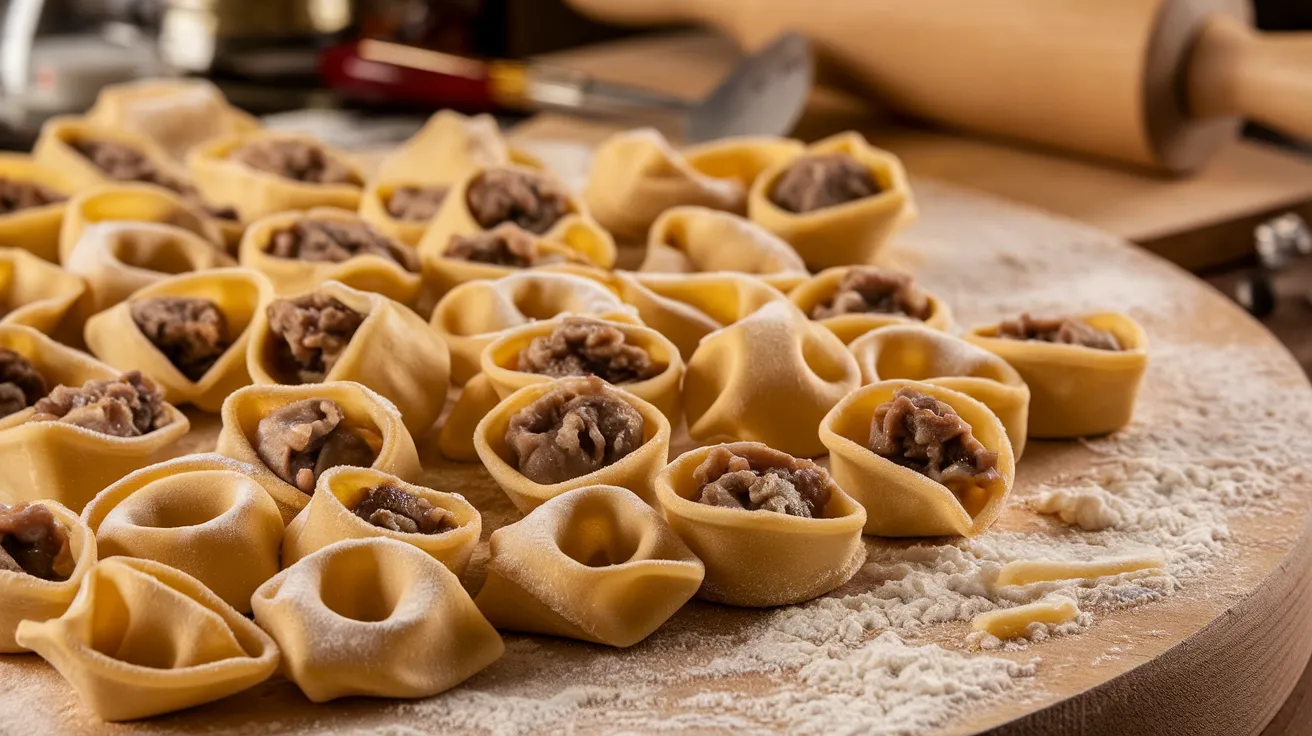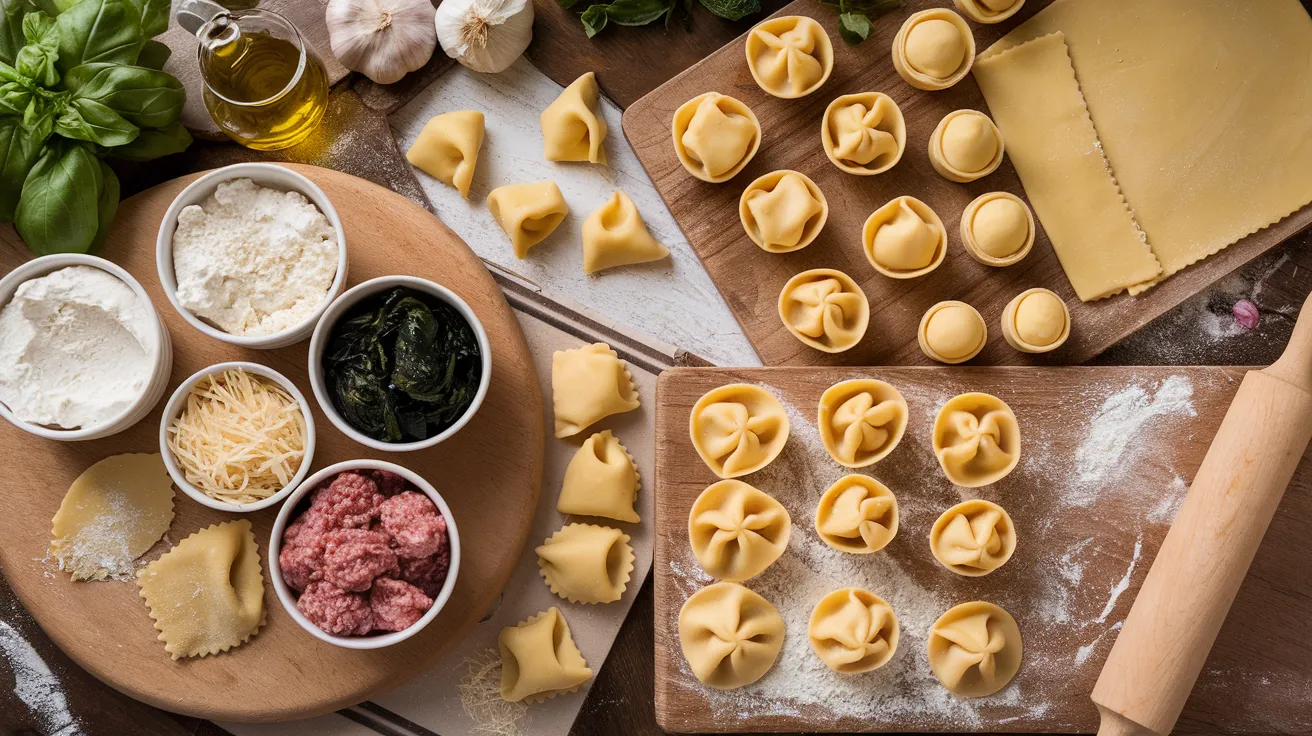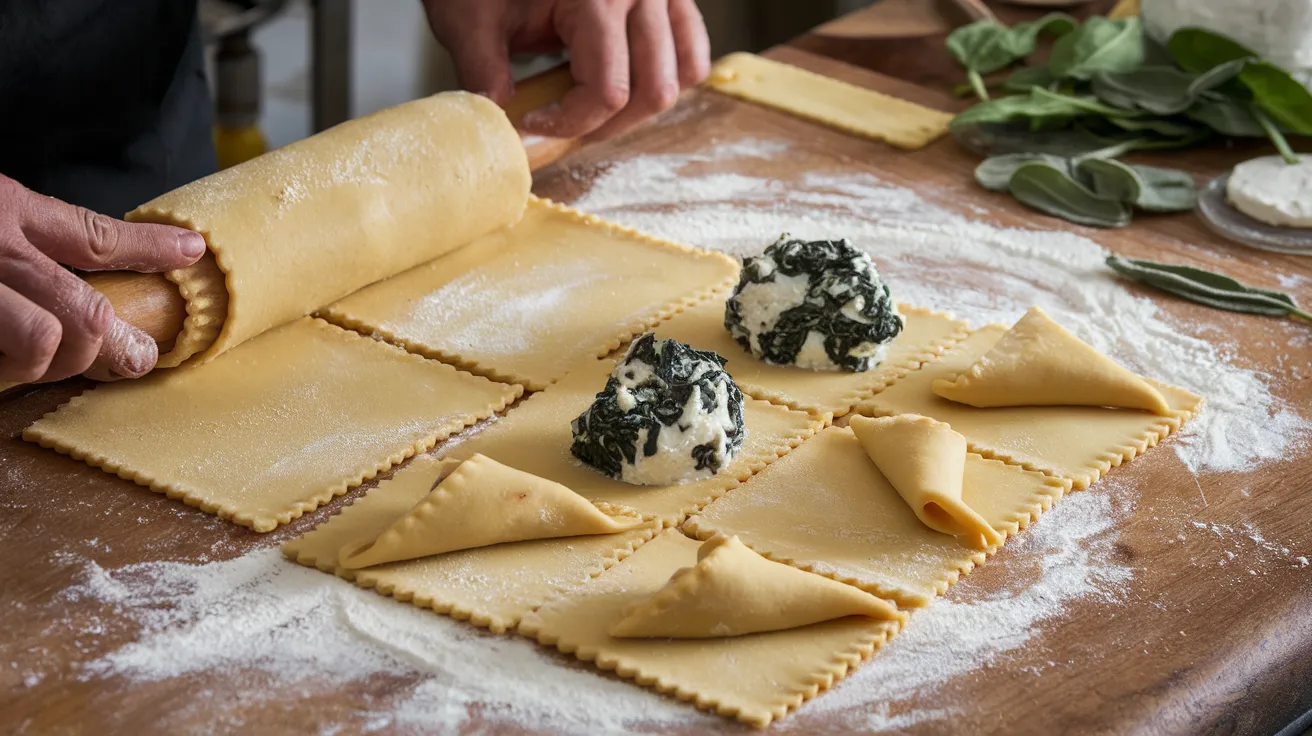Introduction
When it comes to Italian cuisine, pasta is undoubtedly one of the most beloved and widely recognized dishes around the world. With countless varieties, each with its own unique shape, size, and flavor, it’s easy to get lost in the delicious world of Italian pasta. Two such varieties that often cause confusion are tortellini and tortelloni. While they might sound similar and even look somewhat alike, they have distinct characteristics that set them apart. So, what is the difference between tortellini and tortelloni? Let’s dive deep into the world of these delightful pasta types to uncover their unique traits.
What is Tortellini?


Tortellini are small, ring-shaped pasta that hail from the Emilia-Romagna region in Northern Italy, particularly from the cities of Bologna and Modena. Often referred to as the “belly button” pasta due to their shape, tortellini are traditionally filled with a mix of meat, cheese, or a combination of both. The dough used to make tortellini is typically made from flour and eggs, giving it a tender yet slightly chewy texture once cooked.
Origin and History of Tortellini
The origins of tortellini are shrouded in legend. One popular tale suggests that tortellini was inspired by the shape of Venus’s navel, as seen through a keyhole by an innkeeper. Another story claims that the pasta was created to mimic the shape of a ring, as a romantic gesture. Regardless of its true origins, tortellini have become a staple of Italian cuisine, beloved for their unique shape and delicious fillings.
What is Tortelloni?
Tortelloni, on the other hand, are essentially the larger cousins of tortellini. While they share a similar shape, tortelloni are significantly larger in size, making them easier to differentiate from tortellini. Tortelloni are also typically filled with vegetarian ingredients, such as spinach, ricotta, and various herbs, rather than meat. The dough used for tortelloni is similar to that of tortellini but is often rolled out slightly thicker to accommodate the larger size.
Origin and History of Tortelloni
Like tortellini, tortelloni also originate from Northern Italy, but their exact origins are less clearly defined. They are widely enjoyed across Italy, with different regions putting their own spin on the fillings and sauces that accompany them. The use of vegetarian fillings in tortelloni makes them a popular choice for those who prefer lighter, non-meat dishes.
Key Differences Between Tortellini and Tortelloni
While tortellini and tortelloni may appear similar at first glance, several key differences set them apart:
Size Differences
The most noticeable difference between tortellini and tortelloni is their size. Tortellini are small, usually no larger than a quarter, while tortelloni are much larger, sometimes as big as a silver dollar. This difference in size also affects the cooking time, with tortelloni requiring a bit longer to cook compared to tortellini.
Filling Variations
Another major difference lies in the fillings. Tortellini are traditionally filled with a mixture of meat, cheese, or a combination thereof, such as prosciutto, mortadella, and Parmigiano-Reggiano. Tortelloni, however, are typically filled with vegetarian ingredients. Common tortelloni fillings include spinach and ricotta, pumpkin, and various herbs. These filling differences make tortellini a richer, more savory option, while tortelloni offer a lighter, more delicate flavor profile.
Shape and Appearance
Although both types of pasta share a similar ring shape, tortellini are usually folded into a smaller, tighter ring, resembling a small belly button or navel. Tortelloni, being larger, have a more pronounced fold and a more open, crescent-like shape.
Texture and Thickness of Dough
The dough used for tortellini is often rolled out thinner than that used for tortelloni, contributing to its delicate texture. Tortelloni, due to their larger size and thicker dough, have a slightly more substantial bite. This difference in dough thickness also means that tortelloni can hold up better in more robust sauces, whereas tortellini are best suited to lighter broths and simple sauces.
How Are Tortellini and Tortelloni Made?
Making tortellini and tortelloni from scratch is a labor of love that requires some time and effort, but the results are well worth it. Here’s a closer look at how each is made:
Ingredients Used in Tortellini
To make tortellini, you’ll need:
- All-purpose flour
- Eggs
- Salt
- Water (if needed)
- Fillings (such as a mixture of meats like prosciutto, mortadella, and cheese like Parmigiano-Reggiano)
Ingredients Used in Tortelloni
For tortelloni, the ingredients are similar, with a few differences for the fillings:
- All-purpose flour
- Eggs
- Salt
- Water (if needed)
- Fillings (such as spinach and ricotta, pumpkin puree, or other vegetarian options)
Step-by-Step Guide to Making Tortellini
- Prepare the Dough: Start by mixing the flour and salt in a large bowl. Create a well in the center and crack in the eggs. Mix slowly, incorporating the flour into the eggs until a dough forms. Knead the dough until it’s smooth and elastic. Let it rest for at least 30 minutes.
- Prepare the Filling: While the dough rests, prepare the filling. Traditional tortellini filling is made by finely chopping or grinding a mixture of meats and cheese. Season to taste.
- Roll Out the Dough: After resting, roll the dough out on a floured surface until it’s thin but not too delicate. Use a pasta roller for even thickness.
- Cut and Fill the Dough: Cut the dough into small squares or circles. Place a small amount of filling in the center of each piece of dough. Fold the dough over to create a half-moon shape, then bring the corners together and press to seal.
- Cook the Tortellini: Boil the tortellini in salted water until they float to the top, usually 3-5 minutes. Serve with a light broth or sauce of your choice.
Popular Recipes with Tortellini
Cheese Tortellini with Pesto Sauce
This simple yet flavorful dish combines the richness of cheese-filled tortellini with the vibrant flavors of fresh basil pesto. Toss cooked tortellini in pesto sauce, and garnish with freshly grated Parmesan and a sprinkle of pine nuts.
Meat Tortellini in Broth
A classic Italian comfort food, this dish features meat-filled tortellini served in a warm, savory broth. It’s perfect for cold days or when you’re craving something hearty and comforting.
Popular Recipes with Tortelloni
Spinach and Ricotta Tortelloni with Butter Sage Sauce
A popular vegetarian option, spinach and ricotta tortelloni are delicious when paired with a simple butter sage sauce. Melt butter in a pan, add fresh sage leaves, and toss the cooked tortelloni to coat. Garnish with a sprinkle of Parmesan.
Pumpkin Tortelloni with Brown Butter and Sage
This dish showcases the sweet, nutty flavor of pumpkin-filled tortelloni, complemented by a rich brown butter and sage sauce. The combination of sweet and savory flavors makes this dish a delightful autumnal treat.
Culinary Uses and Serving Suggestions
Serving Tortellini
Tortellini are incredibly versatile and can be served in a variety of ways. They’re commonly enjoyed in a light broth, which enhances their delicate flavors, or paired with simple sauces like marinara, Alfredo, or even just butter and sage.
Serving Tortelloni
Tortelloni, being larger and more substantial, are best suited to heartier sauces. They pair well with rich butter sauces, creamy tomato sauces, or even a simple olive oil and herb dressing. The larger size allows them to hold up well in dishes with more robust ingredients.
Regional Variations in Italy
Tortellini in Northern Italy
In Northern Italy, particularly in Bologna and Modena, tortellini are traditionally served in broth. This preparation highlights the savory flavors of the meat-filled pasta, making it a staple in holiday meals and special occasions.
Tortelloni in Central and Southern Italy
In Central and Southern Italy, tortelloni are often found filled with local ingredients like spinach, ricotta, and pumpkin. These regions prefer lighter, more vegetarian-friendly fillings and often pair tortelloni with simple yet flavorful sauces that allow the filling to shine.
Pairing Tortellini and Tortelloni with Sauces
Best Sauces for Tortellini
- Light Broth: A clear chicken or vegetable broth is ideal for meat-filled tortellini, allowing the flavors of the filling to stand out.
- Pesto: A fresh basil pesto pairs beautifully with cheese tortellini, adding a burst of herbal flavor.
Best Sauces for Tortelloni
- Butter Sage Sauce: This simple yet rich sauce complements the flavors of spinach and ricotta or pumpkin tortelloni.
- Tomato Cream Sauce: A creamy tomato sauce provides a nice contrast to the delicate fillings of tortelloni.
How to Store and Preserve Tortellini and Tortelloni
Storing Fresh Tortellini and Tortelloni
To store fresh tortellini or tortelloni, place them on a baking sheet in a single layer and refrigerate for up to 2 days. Be sure to cover them with a damp cloth to prevent drying out.
Freezing Tortellini and Tortelloni
For longer storage, freeze tortellini or tortelloni on a baking sheet until solid, then transfer them to a freezer bag. They can be frozen for up to 3 months. To cook from frozen, add them directly to boiling water and increase the cooking time slightly.
Common Mistakes to Avoid When Making Tortellini and Tortelloni
Overfilling the Pasta
One common mistake is overfilling the pasta, which can cause it to burst during cooking. Be mindful of the amount of filling you use, ensuring there’s enough dough to seal properly.
Not Sealing the Edges Properly
If the edges aren’t sealed properly, water can seep in during cooking, causing the filling to leak out. Ensure the edges are firmly pressed together, using a bit of water to help seal if necessary.
Nutritional Information
Calories and Nutrients in Tortellini
Tortellini, particularly those filled with cheese and meat, are relatively high in calories due to their rich fillings. They also provide a good source of protein, especially when filled with meat, and calcium from cheese fillings.
Calories and Nutrients in Tortelloni
Tortelloni, depending on their fillings, can vary in nutritional content. Vegetarian fillings like spinach and ricotta provide a good source of vitamins and minerals while being lower in calories compared to meat-filled pasta.
Conclusion
In the delightful world of Italian pasta, tortellini and tortelloni each hold a special place. While they may look similar at first glance, their differences in size, filling, and texture offer unique culinary experiences. Whether you prefer the small, savory bites of tortellini or the larger, more delicate tortelloni, there’s no wrong choice. Both varieties offer a taste of Italy’s rich culinary heritage, making them a wonderful addition to any meal. So, why not try making them at home and discover your favorite?
FAQs
- What is the best way to cook tortellini and tortelloni?
The best way to cook tortellini and tortelloni is to boil them in salted water until they float to the top, indicating they are done. This usually takes 3-5 minutes for tortellini and 4-6 minutes for tortelloni. - Can I substitute tortellini for tortelloni in recipes?
Yes, you can substitute tortellini for tortelloni in most recipes, but keep in mind that the cooking time and sauce pairing might need to be adjusted to account for the difference in size and filling. - How long do tortellini and tortelloni last in the fridge?
Fresh tortellini and tortelloni can last in the fridge for up to 2 days if stored properly in an airtight container or covered with a damp cloth. - Are tortellini and tortelloni gluten-free?
Traditional tortellini and tortelloni are made with wheat flour, making them not gluten-free. However, gluten-free versions are available or can be made at home using gluten-free flour. - What are some vegetarian fillings for tortellini and tortelloni?
Popular vegetarian fillings include spinach and ricotta, pumpkin, mushroom, and various cheese blends, offering delicious options for those who prefer meatless meals.

